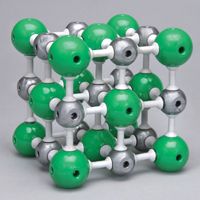My Cart
Your Shopping Cart is currently empty. Use Quick Order or Search to quickly add items to your order!
By Shuana Jordan
Product Developer

Students often struggle to identify types of compounds and name them appropriately. Here are 2 simple activities that help.
In 1 activity, students work in small groups to combine ion cards and to name the resulting ionic compounds. Then, for a real-world connection to their card practice, students research the main ingredient in each of several common household products and identify the compound as binary or ternary. These activities are appropriate for a class of 30 high school students working in 5 groups of 6 students and later in pairs.
Grades 9–12
Physical Science
Nomenclature and Bonding Basics of Ionic Compounds Data Table
| Cation | Anion | Name of Compound | Chemical Fromula | Binary or Ternary? | ||
| Name | Symbol with Charge | Name | Symbol With Charge | |||
Have students take several examples of the compounds from their list and draw Lewis structures to show how electrons are being transferred. They may then create 3-D models of the structures.
To get further practice with naming and writing chemical formulas of different types of compounds (including molecular compounds, acids, bases, polyatomic ions, organic functional groups, and hydrocarbons), students can use Carolina’s Chemistry Formula Practice app for the iPod® and iPad®. This app includes a feature whereby teachers can use a classroom code with a leaderboard to assess how well students are doing.